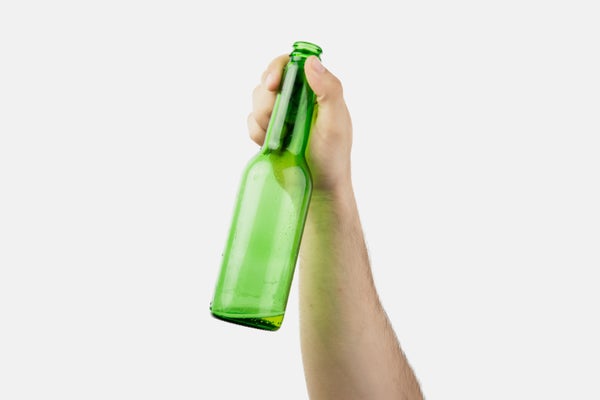First, there was too much rain. An ill-timed storm thrashed barley fields in Montana—home to over a fifth of the country’s barley crop—and the water ruined the golden fruits. Just a few years later a dry heat wave shriveled grains and bowed the plants over. Resulting shortages shot the price of high-quality barley through the roof, squeezing both farmers and some of their key customers: beer brewers.
Even if you didn’t notice beer price fluctuations following those years—2014 and 2017—consumers probably will in the near future. Climate change will make extreme events like prolonged droughts and heat waves more severe and frequent, says Steven Davis, an earth systems scientist at the University of California, Irvine. That, in turn, could make beer (the vast majority of which is brewed with barley) dizzyingly expensive, according to study results Davis and his research team published Monday in Nature Plants.
To understand just how exorbitantly priced climate change could make the world’s most popular alcoholic beverage, the scientists constructed three global models: The first is a standard one to predict how Earth’s climate will change under different greenhouse gas emissions scenarios that “tell us how frequent and severe concurrent heat and drought events will be,” Davis says. “We fed [this data] to a crop model that says how a barley plant will fare in certain environmental conditions and areas.” The data produced by those two models went into the third: an economic model that predicts price changes in beer when barley supplies dwindle.
On supporting science journalism
If you're enjoying this article, consider supporting our award-winning journalism by subscribing. By purchasing a subscription you are helping to ensure the future of impactful stories about the discoveries and ideas shaping our world today.
Davis used these models to calculate outcomes for four different warming scenarios, in which global temperature rises by up to 1.7, 2.6, 3.1 or 4.8 degrees Celsius by 2100. The results say barley yields will suffer by 3 percent to 17 percent. That, in turn, could drive the average price of beer up by 15 percent within the next century in the best-case scenario. “In the more severe climate events,” Davis says, “beer prices basically double.”
Not all countries will suffer equally, though. How much the local price of beer will rise following years with extreme weather events depends on how much barley the country imports, people’s incomes and the respective drinking cultures involved, says Ariel Ortiz-Bobea, an economist at Cornell University who did not work on the study. “In France people may drink more wine,” he says. “So if beer becomes more expensive, the demand will drop more there than in Germany. If you love beer and it becomes more expensive, you’ll have to find the money.” According to the new study, the country that stands to see the greatest threat to its drinking habits is Ireland, where the worst-case scenario estimates a price jump equivalent to the value of $19 today for a six-pack of cold ones after a bad year.
Davis says his team’s model might actually paint a picture that is rosier than reality. For one thing, beer also relies on another agricultural product—hops—which may have its own shocks triggered by climate change. And to make things even worse, “we know that the quality of grains also decreases under extreme conditions,” he notes. “So the actual taste and quality of beer could decrease as well.”
These new data are just the latest pieces of evidence to suggest how much climate change may alter real, daily life in the 21st century, says Camilo Mora, a climate scientist at the University of Hawaii at Mānoa. “We’re talking about beer! It’s pretty sad,” he says. “For Americans, this is personal because of how much beer we drink here.” And for those who call barley their profession—like farmers, barkeepers and brewers—Mora says extreme weather events will have punishing consequences. “You have this chain of people who depend on this crop not so much for drinking, but also their livelihood.”
Things are only likely to go downhill from there, Ortiz-Bobea says. Other research suggests agricultural producers in general will struggle to keep yields up as climate change rains down more destructive and frequent disasters, and all the while the world’s population and appetites will continue to grow. “If we keep demanding more agricultural products—barley for beer, corn, wheat—and yields and productivity don’t increase, then we’ll convert grasslands or forests into [farms],” he says. That, in turn, could fuel more emissions, reduce carbon sinks and accelerate climate change. “Yeah, it’s a vicious cycle,” he says.
Protecting the world’s farms from disasters is a monumental challenge, Ortiz-Bobea says. “It’s one thing to adapt to a climate that changes gradually,” he notes. But that is unlikely to be the case. Climate change will more probably make every year different from the last, each with its own unpredictable and potentially brutal conditions. He adds that humanity will need to overhaul agricultural and technological systems to adapt to that world. “That takes decades,” he says. “We don’t have decades.” The transition to a more sustainable world could be very painful, and there might be less beer around to make it easier to cope.
